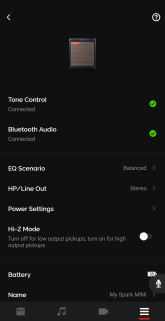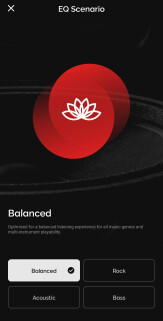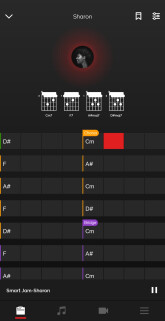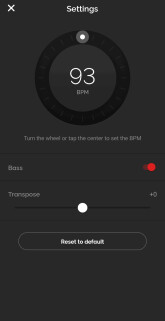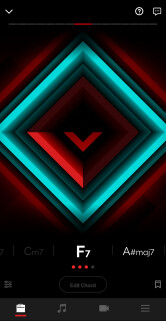Remember, we had the opportunity to test the surprising miniature amplifier called Spark Go from Positive Grid. Today, let's find out how its big brother, the Spark Mini, fares.

Features
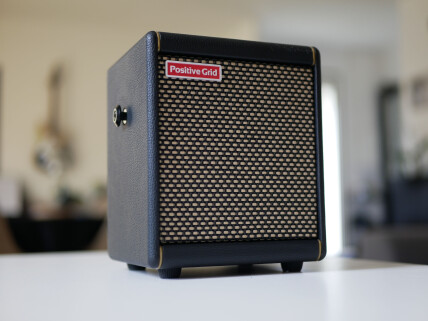
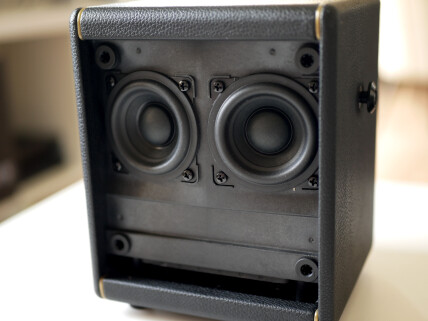
Before continuing our test, let’s note that the Spark Mini is designed in the USA, but manufactured in China. It’s hard to fault it for build quality, as the overall package seems solid. The retail price is €215/$229.
A versatile and practical amp
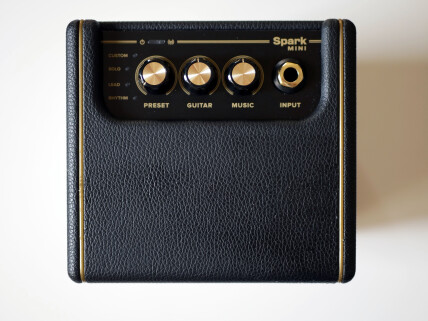
- a noise gate
- a compressor or wah-wah
- a boost/overdrive/distortion/fuzz pedal
- the amplifier and its speaker
- a modulation effect or additional equalization
- a delay
- a reverb
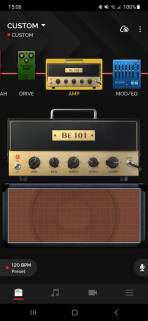
In use, I was also bothered by the device’s extreme dependence on its mobile app, particularly for EQing. If you like to play several different guitars, you won’t be able to adjust the frequency curve without having your phone in front of you. I could imagine a “Tone” type knob that can be found on some amps that share similar dimensions, and which allows you to sculpt an overall equalization.
The app gives access to additional features that are quite relevant to everyday practice. With Spark, it is possible to analyze the harmonic content of a YouTube video or a track loaded via the Spotify and Apple Music streaming platforms. In the same spirit, there are two other features called Quick Jam and Smart Jam. The first is a collection of accompaniments consisting of drums and bass (which can be deactivated) in various styles. The second, which I find the most interesting, lets you play a chord progression, which the application then analyzes to suggest different accompaniments. By the way, unlike the harmonic tracking of music tracks imported from YouTube, Spotify or Apple Music, the app can detect four-note chords and isn’t limited to triads alone.
Here’s an example of me playing with an automatically generated accompaniment on a chord progression :

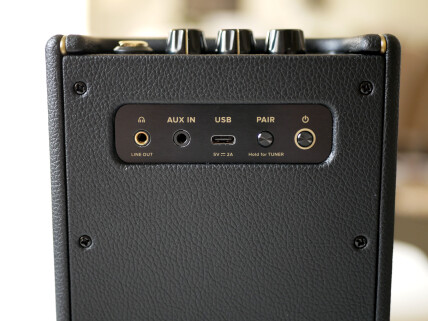
.
Here are two extracts recorded using the audio interface function and dedicated ASIO drivers:

- 2 – Enregistrement en USB00:22
- 3 – Enregistrement en USB 200:31
What about the sound?
Here are a few extracts recorded using a Shure SM57 microphone:

- 4 – Clone Drive + American Deluxe + Rev Ambient01:02
- 5 – Optical Comp + AD Clean + Room Studio A00:24
- 6 – Blues Boy + Plate Short00:32
- 7 – American High Gain + Digital Delay + Holy Grail00:30
- 8 – BE 101 + Rev Chamber00:30
- 9 – Red Comp + Tube Drive + TreadPlate + Classic Plate00:21
- 10 – Hammer 500 + Digital Chorus00:13
- 11 – LA Comp + Black Op + RB-80000:18
The Mini offers a less boxy sound than the Spark Go, with a more pleasing response in the lower end of the spectrum. The format and power also make it more versatile for uses other than solo practice. For example, it could be used to accompany a duo. As for the simulations, they remain the same and are successful, as a whole. They also have the advantage of covering a wide range of sounds. Of course, playing sensations are anything but “organic”, but the amp reacts correctly to the instrument’s dynamics, and playing with the volume knob is entirely credible. Once again, I was pleasantly surprised by the amp’s behavior when used with a 7-string guitar and even a 5-string bass. The sound remains clean and defined.
Conclusion
The Spark Mini is a compact amplifier with excellent build quality and a wide range of sounds. Playing sensations, while not impressive, are entirely credible and respect the instrument’s dynamics. However, we’ll have to be content with the amp’s heavy dependence on its mobile application. The latter has the merit of being pleasant to use and offers functionalities useful for daily practice. Generally speaking, we would have liked to have been able to adjust the equalization of a preset without using our phone, and it would have been nice to be able to customize the amp/loudspeaker pairing more. Nevertheless, the Spark Mini will easily find its place in many situations.

